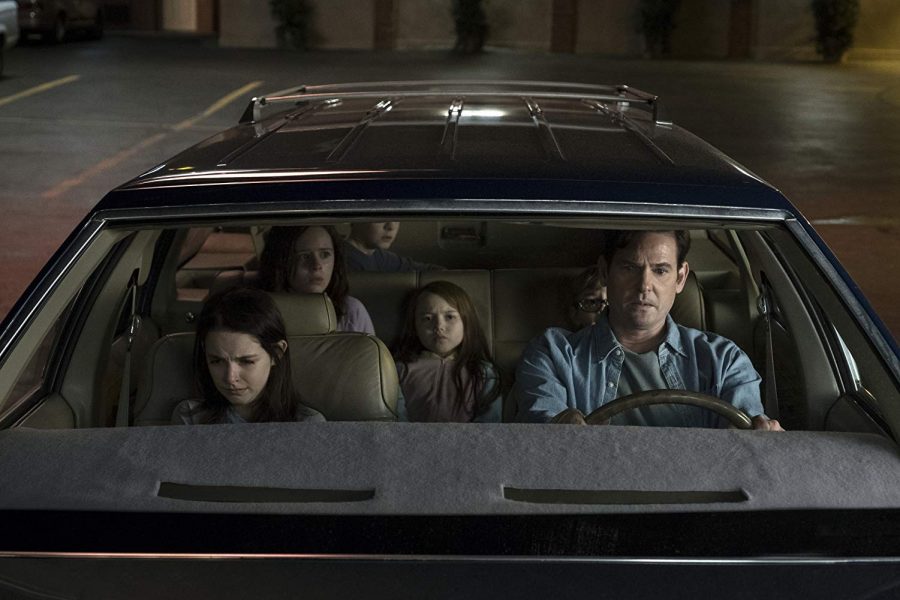While Netflix’s adaptation of “The Haunting of Hill House” orbits but never intersects the themes in Shirley Jackson’s original novel, the show’s exploration of trauma, parenting, family ties, and death make for a human addition to the Halloween season.
“Hill House” is a ten-episode Netflix Original created by Mike Flanagan (“Hush” and “Gerald’s Game”) and released on Oct. 12. Its source material, a gothic horror story by the same name, was published in 1959.
Skewing the modern horror-flick formula, “Hill House” delivers an interesting blend of gothic horror and 21st century drama. The show sets up jump scare after jump scare, but only delivers on them at unexpected times and in unexpected ways. “Hill House” keeps viewers uneasy and paranoid from start to finish.
Unlike Jackson’s novel, Flanagan’s story circles around a large Crain family: five children — three girls and two boys — and their parents, who flip real estate. The family buys the Hill House, the dilapidated husk of an ornate mansion in Massachusetts, intending to renovate and sell it for a pretty penny.
But the Hill House has a darker fate in store for the Crain family.
In all, the story flips between the talents of 13 actors: six young versions of the Crain family, six older versions, and their mother, Olivia (Carla Gugino) who is frozen in time by death. Much of the show hinges on Nell (Victoria Pedretti and young Violet McGraw) and her twin, Luke (Oliver Jackson-Cohen and young Julian Hillard), and the apparitions that haunt them throughout their lives.
The ensemble cast is a balanced bunch, especially the actors playing the Crain family’s five young children. The cast’s memorable performances play beautifully together, and the transitions between sets of actors leave no characterization lost in translation.
Flanagan’s background as a film editor appears to serve the series well. In addition to its beautiful set and costume design, the show’s cinematography makes the most of practical simplicity.
Episode 6, for instance, is largely a compilation of extremely long takes. The long-take format showcases not only the extensive set design and masterful performances of both cast and crew, but also reminds its audience that dramatic horror doesn’t need special effects or fanciful camera moves to leave a lasting impression.
“Hill House” is not exactly designed for casual viewing. It tells its story in a series of circular flashbacks, bleeding in and out of the present to show each character’s perspective of the same events. Flanagan illustrates character development with subtle camera direction and visual cues, so it’s easy to miss an important moment if you look away for too long.
Mirroring its source material only in spirit, “Hill House” uses every parent’s worst nightmare to drive its story. Jackson’s novel instead capitalizes on the character Eleanor’s agoraphobia.
This series is not for people easily disturbed by body horror — such as depictions of mangled bodies and the modern embalming process — or people sensitive to the topic of suicide. “Hill House” deals with suicide, substance abuse, child abuse, psychosis, and graphic depictions of the more uncomfortable aspects of death and decay.
Recommended viewing for “Hill House” includes a very dark room, a friend, a blanket, and a screen with the brightness turned up to better see all the ghosts lurking in the dark corners of various scenes.
As for the finale, viewers might also want to consider a box of tissues.


